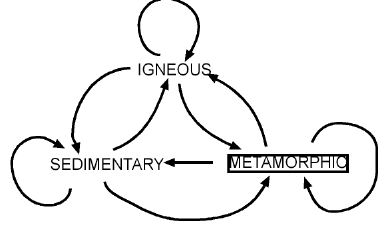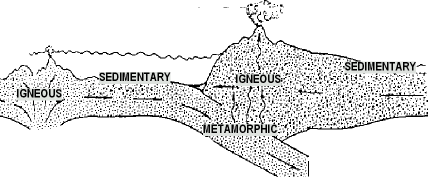|
|
||||
1. Sally picked up a piece of
"rock" while she was walking to school. It felt heavy and was a
golden color. She thought about what it could be, and then she realized it
might be a mineral and not a rock. What should she do to find out more?
2. Joe found a rock and noticed it was very light. He decided to see if it would float. He placed it in water and it did. Which of the following could it be?
3. A solution consists of:
4. In a solution, which of the following is present in the greatest amount?
5. In order to make a supersaturated solution of Kool-Aid you must ____________ the solution.
6. The hardest mineral listed on the Mohs Hardness scale is:
7. Which of the following minerals can be scratched by a fingernail?
8. Rocks are formed:
9. List 3 uses of minerals.
10. Stalactites and stalagmites are associated with:
11. List 3 places where sedimentary rocks can be formed.
12. Fossils are:
13. Explain how early humans made color.
14. Paleontology is the study of:
15. Which of the following is not a sedimentary rock?
16. Explain how old geologic time is.
17. Which of the following things is the oldest?
18. Explain where sand comes from and what you can tell about its origin from the individual grains.
19. Draw the arrows to show how the rock cycle operates.
20. On this cross section of the Earth's plates. Draw in red where igneous rocks are formed; yellow where sedimentary rocks are formed; and green where metamorphic rocks are formed.
ANSWERS: 1.(D); 2.(B); 3.(A); 4.(B); 5.(D); 6.(A); 7.(C); 8.(C); 9. gems, concrete, plaster, building, to name a few; 10.(A); 11. lake, river, pond, ocean, and many other wet environments; 12.(C); 13. crushed and powdered colored mineral in a thick gel like animal fat; 14.(D); 15.(D); 16. real old, older than anyone can image; 17.(D); 18. from broken down Mother Rocks; 19. 20. |
||||

 Rock
Cycle
Rock
Cycle 

